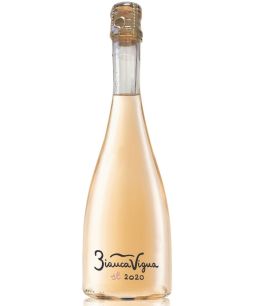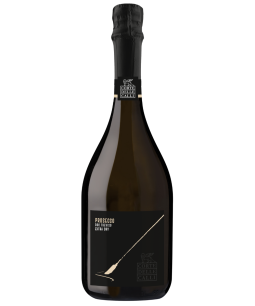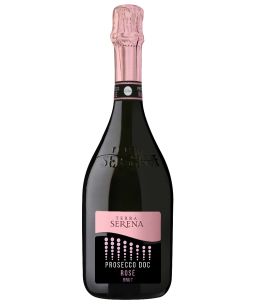

PROSECCO A CHANGE IN STYLE
Friday 9th August
The 13th of August is National Prosecco day. Our Master of Wine, Ana Jackson, takes us through the rich history, evolving styles, and diverse quality tiers of Prosecco, Italy's beloved sparkling wine.
PROSECCO: A SPARKLING ICON
Prosecco is an iconic Italian drink that is modern, informal and fun. With its lively elegance, fruity and floral aromas, it is loved all over the world. The Prosecco zone is in north-east Italy and extends between the towns of Vicenza and Trieste, covering more than 14,000 hectares and producing more than 300 million bottles per year.
THE PROSECCO REGION: A LAND OF TRADITION AND INNOVATION
The heart of the Prosecco region lies between Conegliano and Valdobbiadene, about 50 km from Venice and 100 km from the Dolomites, where grape cultivation has a long and storied history. As the original production area, this region is renowned for producing the finest Prosecco, with vine-growing traditions that date back centuries.
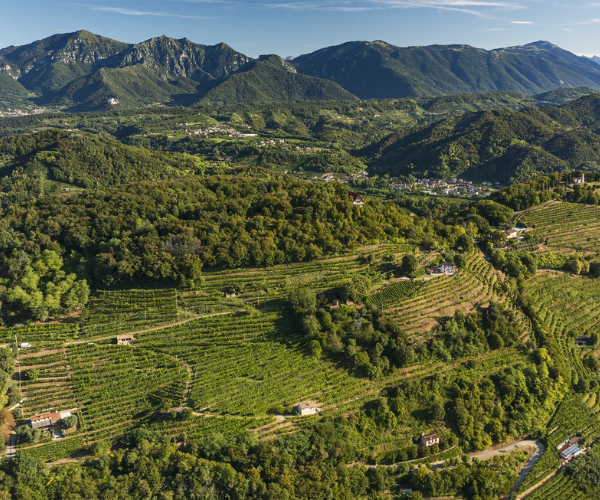

UNDERSTANDING PROSECCO'S QUALITY TIERS
There were about 6,000 hectares of vineyards in 2009 when there was a change in legislation. The Prosecco area expanded to allow for more vineyards to join the appellation but at the same time, there was a re-organisation of the quality system.
The larger Prosecco appellation was elevated to a higher quality tier, DOC (Denominazione di Origine Controllata). This covers 9 Provinces in the Veneto and Friuli Venezia Giulia, mainly on the plains and is the source for most Prosecco. The original classic region of Conegliano Valdobbiadene was elevated to the highest quality tier, Prosecco Superiore DOCG (Denominazione di Origine Controllata e Garantita). This contains 15 communes, mainly on hills and terraces and now makes about 92.4 million bottles of Prosecco.


CONEGLIANO VALDOBBIADENE: THE HEART OF PROSECCO SUPERIORE
Within the Conegliano Valdobbiadene area there are designated single vineyards on very steep hills, called Rive. The wines made from these vineyards can carry the name of the individual Rive on the label – there are 43 individual Rive. The grapes must be hand harvested, come from a smaller yield and the wines need to have the year of harvest (vintage) on the label. These very steep vineyards are very labour intensive, for every hectare of vineyards, about 600 hours’ work is necessary, whereas in the plain area where Prosecco DOC comes from, about 150 hours’ work is necessary. Hence, in these premium steep sites, there are mainly small family run producers. There are only 3.8 million bottles of Rive Prosecco made. This represents just over 1% of the total production of Prosecco, a tiny amount, which makes them ever so special!
CARTIZZE: THE PINNACLE OF PROSECCO EXCELLENCE
At the top of the quality tier is the Cru of Cartizze (107 hectares on steep hills in the commune of Valdobbiadene) where grapes tend to be riper than most and from which are made only about 1.1 million bottles.
EXPLORING DIFFERENT STYLES: FROM COL FONDO TO TRANQUILLO
Other types of Prosecco include ‘Col Fondo’ (‘with sediment’), these wines are bottle fermented (as opposed to tank, see below for method of production) and left un-disgorged, hence the sediment. They are released with the original crown cap.
The DOCG Colli Asolani Prosecco is on a hilly outcrop near Treviso and is similar in style to Conegliano Valdobbiadene.
Frizzante Prosecco is a semi-sparkling version, made in the same way as the full sparkling Prosecco, with second fermentation in tank but at a lower pressure, 2.5 bar - the full sparkling Prosecco is 3 bar (in comparison, Champagne is about 5 bar pressure). It results in a style with less demanding bubbles, a softer mousse.
A style which is least known is called Tranquillo (still) and is a real niche product, obtained from the densest, lowest yielding vineyards.
THE GLERA GRAPE: THE SOUL OF PROSECCO
The grape used for Prosecco is called Glera which can be blended with up to 15% of international or local varieties. Glera is also grown in other parts of the world, such as in Australia but the sparkling wine cannot be called Prosecco, due to the change in legislation as mentioned above.


PRODUCTION METHODS: THE TANK METHOD EXPLAINED
Prosecco is made using what is called the Tank method of production, where the bubbles are achieved by a second fermentation in tank after yeast and sugar is added to the base wine (rather than second fermentation in the bottle, as in Traditional Method sparkling wine – like in Champagne/ Cremant/ Cava). This results in a fresher, softer mousse which enhances the general fruity, approachable style of Prosecco.
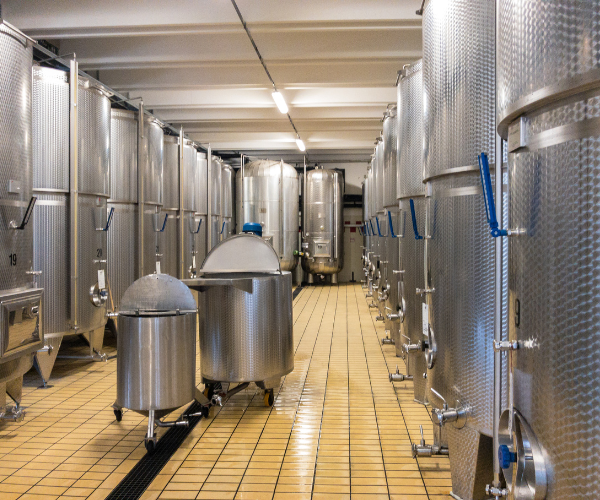

RESIDUAL SUGAR LEVELS: DECODING THE SWEETNESS SPECTRUM
In terms of quality and style, residual sugar is a key driver to the style of Prosecco and the categories can be a little confusing, the key to remember is that ‘brut’ is drier than ‘dry’... Although Extra Brut (0 to 6/g l) and Brut (7 to 12g/l) styles are increasing, the more common are Extra Dry (12 to 17g/l) and Dry (17 to 32g/l). Dry is a style which is decreasing but still commonly seen in Cartizze.
This trend towards drier styles, especially at DOCG level, makes for a more food-friendly approach.


PROSECCO AND FOOD PAIRING: AN ENLIGHTENING MASTERCLASS
Earlier this year I joined a Masterclass on Rive and Cartizze Prosecco and Food matching, which was enlightening. The Rive ones, mainly Extra Brut in style were drier than most Proseccos I had tried and were extremely refined, complex and with impressive concentration of fruit. They paired beautifully with dishes such as cured monkfish; heritage tomato and Sicilian anchovy with orange, chive and balsamic dressing, Chinese style pork, salted melon and Parma ham. The Cartizze, mainly ‘dry’ style (though increasingly producers are making Brut and extra Brut) paired wonderfully with popcorn set cream, pear caramel and salted honeycomb. The BiancaVigna, suggested below, was great with the tomato and anchovy dish.
CONCLUSION: DISCOVER THE VERSATILITY OF PROSECCO
So, whereas most Prosecco is usually sipped on its own, try them with different food dishes and you will be surprised! Here are some examples from some great producers that cover different styles to choose from.



